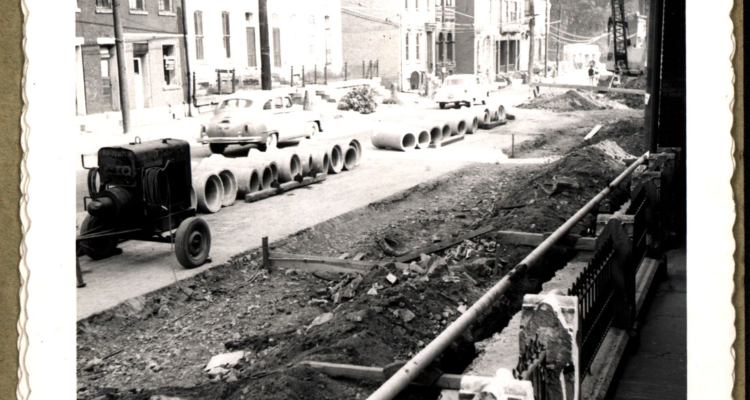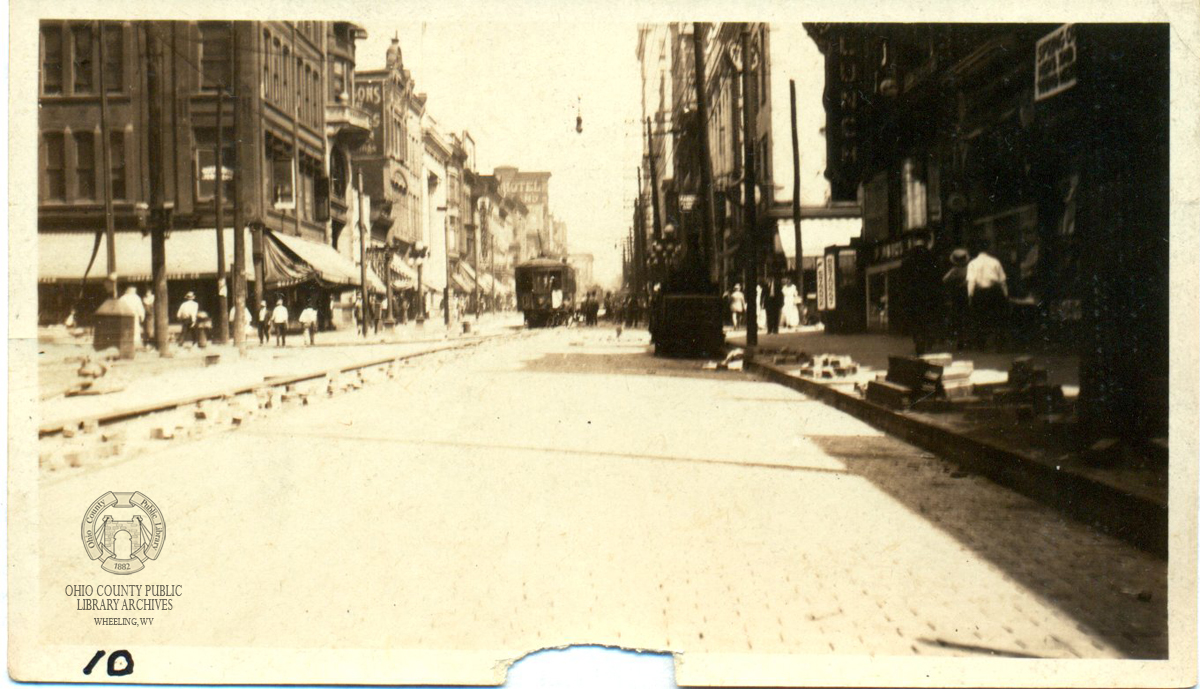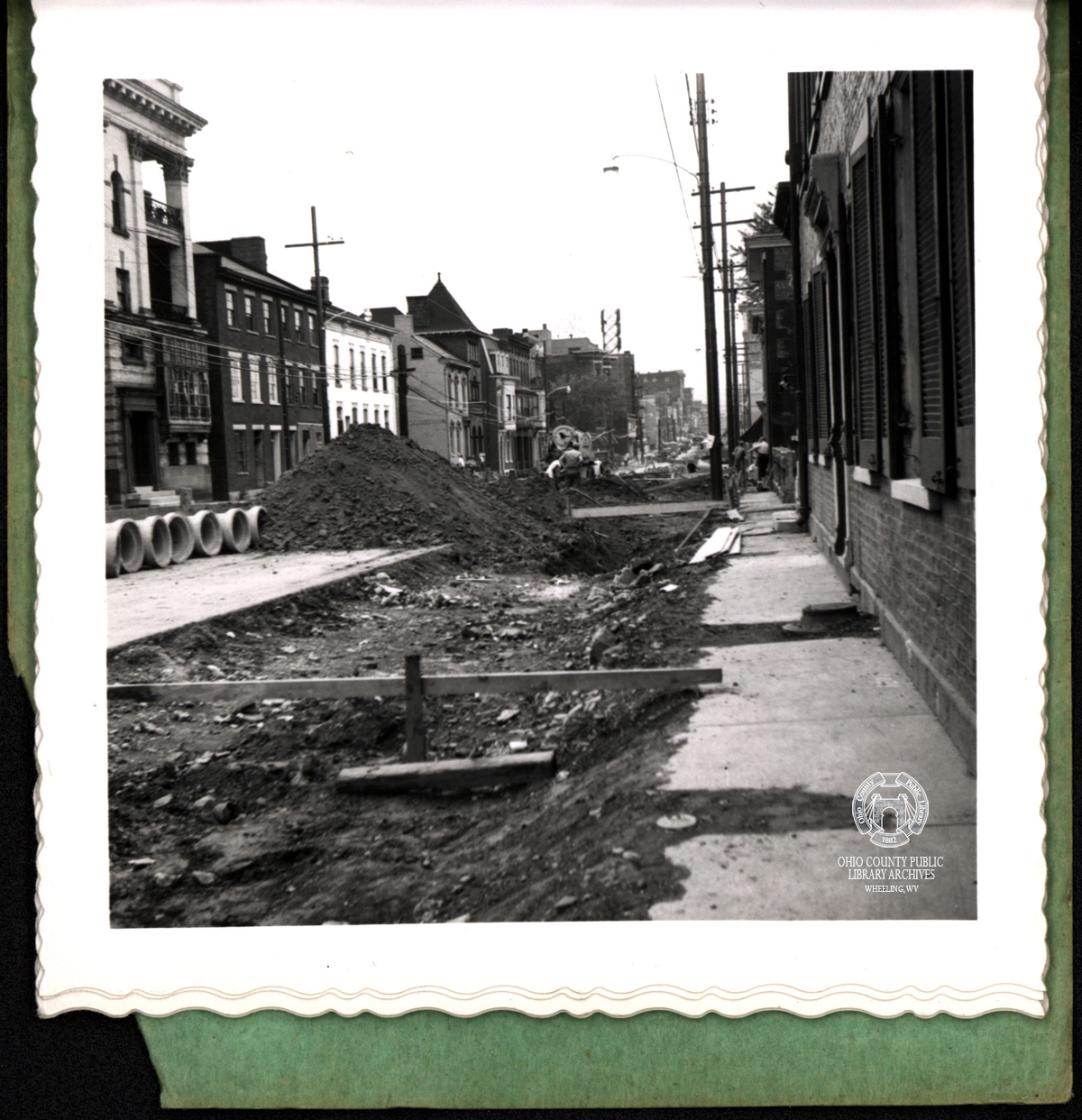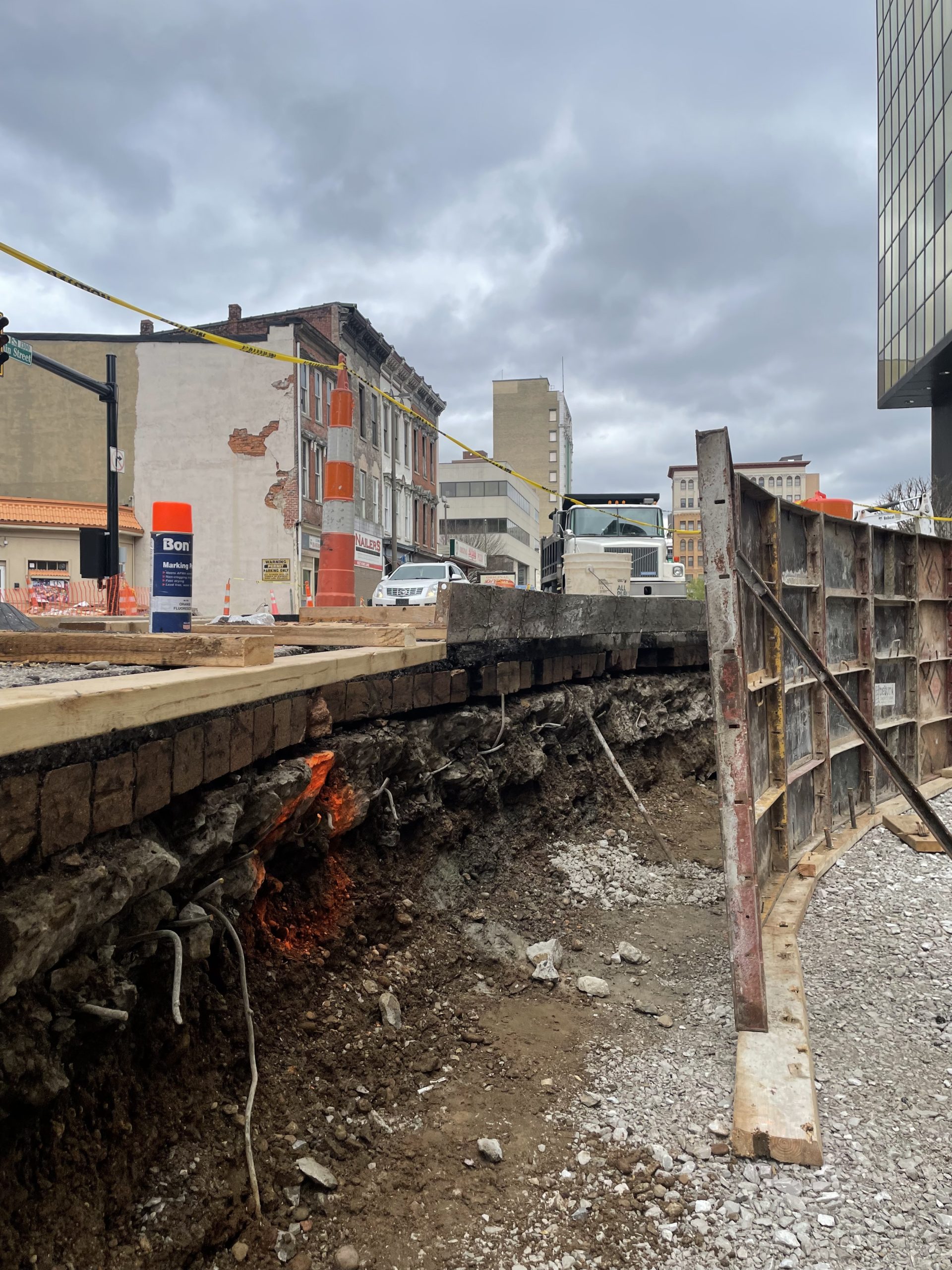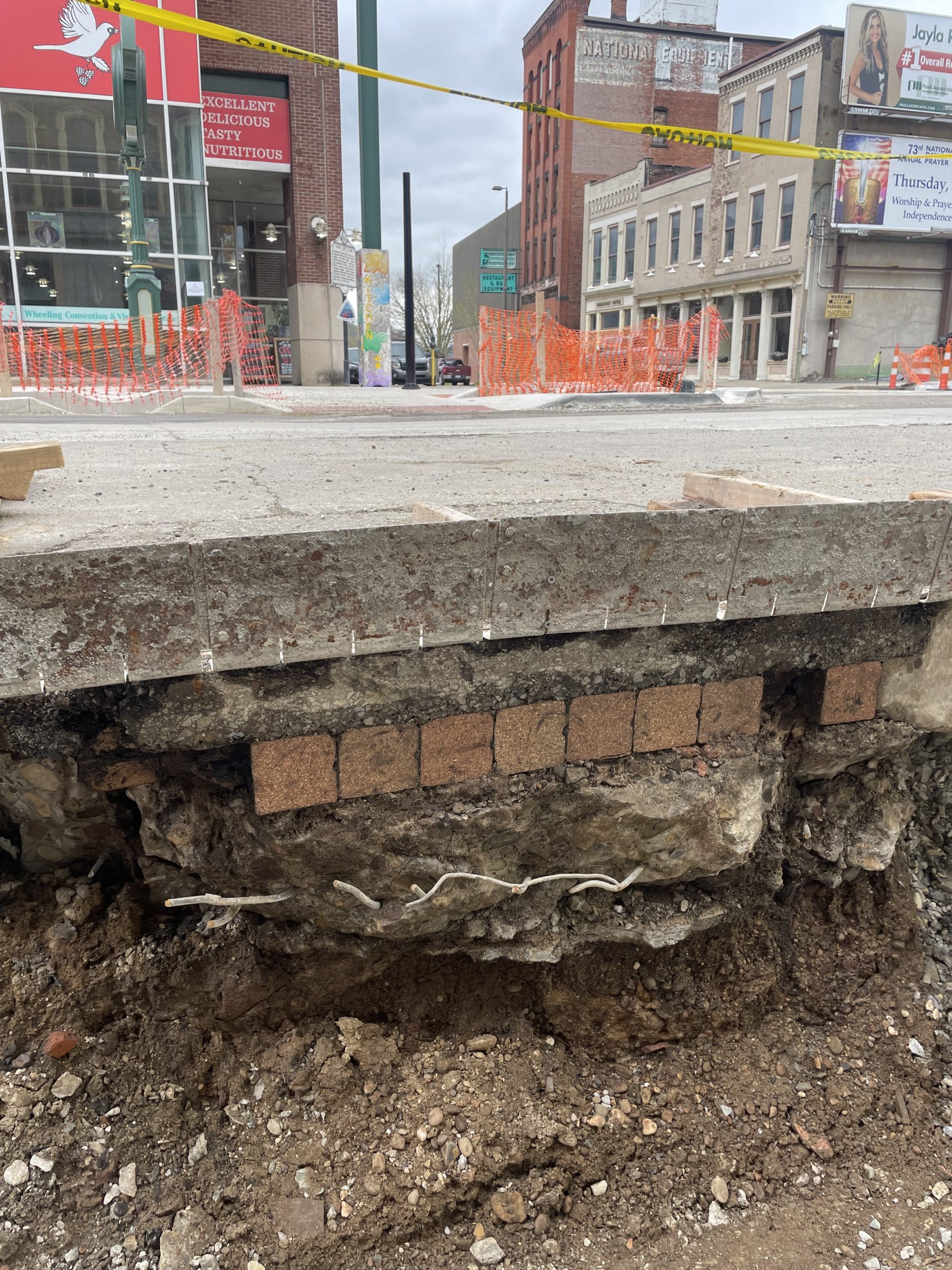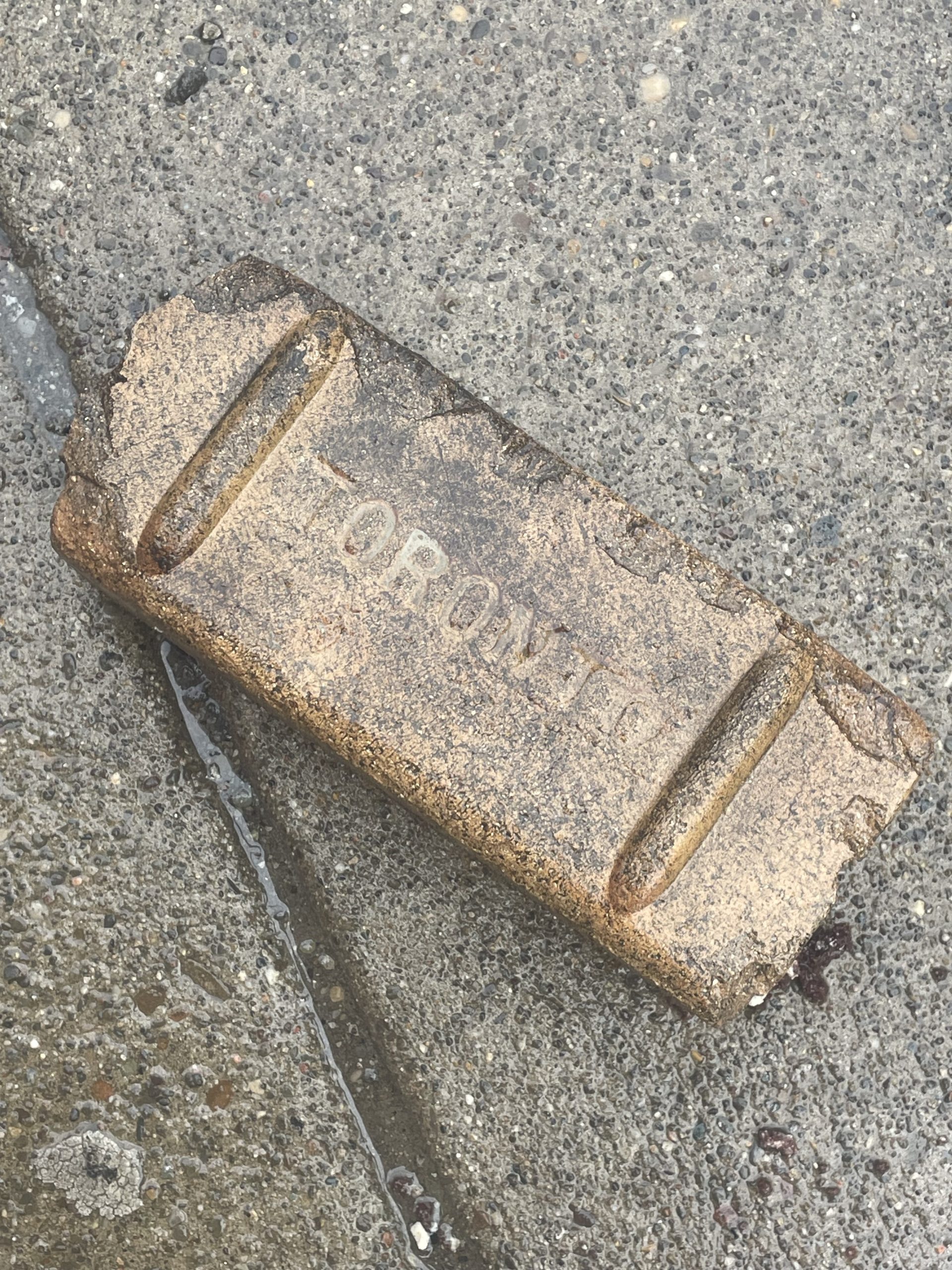“Council Awards Contract for Main Street Paving,” the headline for The Wheeling Intelligencer reads. “Work will begin at once in repairing the thoroughfare which has been in a bad condition for many months.” While it may be inconvenient for a short time, the road will eventually be fixed for the better, beautifying the city of Wheeling. That is, until almost 100 years later, when the exact same road is facing construction all over again.
In 1925, it appeared that Main Street was in not-too-good shape between 12th and 20th streets. After the city council decided on a bid from a local contractor, H. L. Seabright, for $24,803.20, the work was set to begin. There was a rush to achieve “completion in a short amount of time,” so city-hired men and men from the Wheeling Traction company got to work. The work began around April, with the men likely experiencing labor under the budding summer sun, much like we see on Main Street today. It seems that they also faced some of the same issues we face today all those years ago. Lengthy talks were held by the city council regarding replacing water mains and sewer pipes. The charge for the replacement was led by a Mr. J.S. Butts, City Manager. It appears he succeeded in swaying the council and updating the systems. After fixing these, H.L. Seabrite began working on the road. People marveled at the “rapid progress” that was helped by the use of “24-hour cement” that was laid before the bricks. Cement was usually expected to take a jaw-dropping 14 days to set before the bricks could be laid. This speedy new tool seriously expedited the work process.
The work done on Main Street seemed to last a decent while, the next time work appears to have been done was in 1954. The work done in the 50s seems to cover up the brick-laid street of the 20s. Today, we can see these layers of street while it is being worked on. It is like a cake sliced down the middle, with all these wonderful layers of history in there. For instance, the bricks laid in the 1924 streetwork have a worn stamping on them that reads “TORONTO.” Brick manufacturing was a thriving industry in Toronto during the 1920s. It’s fascinating that, since 1924, the people of Wheeling have been walking around on bricks all the way from Canada!
As we all know, the streets are being worked on yet again. While it may feel exhausting to see the symbol of Wheeling becoming the traffic cone for a little while, it’s nice to know that our streets will look so beautiful after. The hard work of those fixing up our streets will pay off. To me, it’s a bit reassuring to think that this has happened before. Our streets have been torn up, traffic rerouted, and Wheeling citizens have gotten through it. Road work? Wheeling’s been there, done that, and will do it again.
• Makayla Carney, a Wheeling native, is the 2023-2024 AmeriCorps member for Wheeling Heritage, where she will get to write all about the history and culture of her hometown. She has a B.F.A. in Film and Television from DePaul University in Chicago. She adores all kinds of art, a lavender latte, and the occasional performance on the Towngate Theatre stage.
References
“Brick Manufacture.” Lost River Walks, https://www.lostrivers.ca/points/Brickmaking.htm. Accessed 28 May 2024.
“Cold Weather Delays Main Street Paving.” The Wheeling Intelligencer, 1954, page 8.
“Council Awards Contracts for Main Street Paving.” The Wheeling Intelligencer, 1924, page 13.
“Rapid Progress Made on Main Street Paving.” The Wheeling Register, 19 Dec. 1925, page 12.


